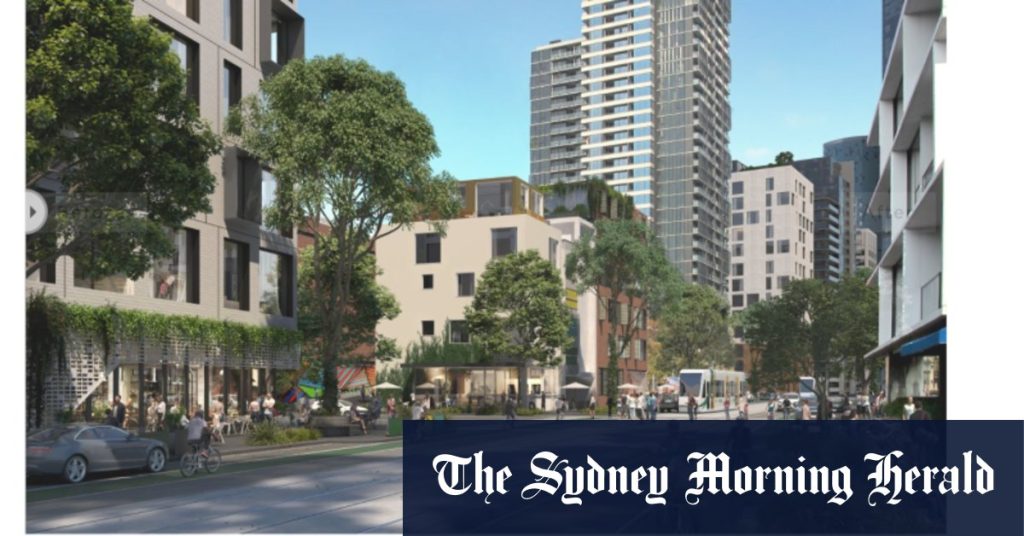The impending opening of the West Gate Tunnel in Melbourne has sparked a contentious debate between the City of Melbourne and the state government over the future of Spencer and Hawke Streets. The city council envisions a transformation of Spencer Street, currently a congested arterial road, into a vibrant inner-city hub with pedestrian-friendly infrastructure, including wider footpaths, bicycle lanes, and a future tram line extension. This vision hinges on leveraging the new Wurundjeri Way extension to divert traffic away from Spencer Street, allowing for the reduction of traffic lanes. However, the state government’s Department of Transport and Planning (DTP) is proposing traffic management strategies that contradict this plan, raising concerns about the viability of the city’s revitalization efforts.
The core of the disagreement lies in the DTP’s proposal to maintain higher traffic volumes on Spencer Street than anticipated by the city’s masterplan. The council argues that this approach undermines the very purpose of the West Gate Tunnel, which was designed to alleviate traffic congestion on city streets. Their presentation explicitly warns that the DTP’s proposal would not only prevent the implementation of the Draft Spencer Street North Masterplan but also negate the intended benefits of the West Gate Tunnel project. Furthermore, the increased traffic flow would threaten the realization of the Hawke Street Linear Park, a planned green space designed to replace traffic lanes and discourage rat-running through local streets, connecting Adderley Park and Curzon Park. The council emphasizes the interconnectedness of these projects, asserting that the success of one depends on the effective implementation of the others.
Adding to the complexity of the situation is the existing community frustration with the current state of Spencer Street. Residents like Gemma Gooding, who regularly navigates the street with her young child, highlight the dangers and intimidation posed by the high-speed traffic. Gooding and others advocate for a reduction in the 60km/h speed limit and a shift towards a more pedestrian-friendly environment, reflecting the evolving residential character of the area. This sentiment is echoed by community groups like the North and West Melbourne Association, who see the potential backtracking on the Spencer and Hawke street plans as a breach of trust with the government. The community’s skepticism is further fueled by concerns about the allocation of funds from the amenity program, designed to mitigate traffic impacts, with allegations of misspent funds on unrelated projects.
The financial aspect of the dispute centers around the amenity program, which has a total budget intended for mitigating traffic impacts. A significant portion of this funding, $30.5 million, has been earmarked for streetscape improvements on Franklin Street in the CBD, raising questions about the prioritization of projects and the availability of funds for the Hawke Street Linear Park. While the state government has released its 50% share of the funding for the Franklin Street project, both the government and the City of Melbourne have remained silent on the release of funds for the Hawke Street park, further fueling community mistrust. This lack of transparency exacerbates the tension between the two entities and raises concerns about the overall management of the amenity program.
Amidst these disagreements, both the City of Melbourne and the state government claim to be working towards a positive outcome for residents. The council affirms its commitment to collaborating with the state government to ensure the West Gate Tunnel’s opening delivers benefits to the community. Meanwhile, the state government acknowledges its ongoing analysis of the tunnel’s impact on Spencer and Hawke Streets, using this data to inform future projects. However, their assertion that the Wurundjeri Way extension will reduce traffic on Spencer and King Streets appears to contradict the council’s concerns about increased traffic volumes. This discrepancy underscores the fundamental difference in perspectives between the two parties.
The situation remains unresolved, with the future of Spencer and Hawke Streets hanging in the balance. The conflicting visions of the City of Melbourne and the state government highlight the challenges of balancing urban development with community needs and expectations. The outcome of this dispute will significantly impact the liveability and accessibility of these key inner-city areas, setting a precedent for future urban planning decisions in Melbourne. The community’s call for transparency, accountability, and a genuine commitment to pedestrian-friendly infrastructure underscores the importance of incorporating resident voices in the decision-making process.

